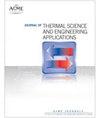A formulated method for streams splitting in heat exchanger network design using pinch analysis
IF 1.6
4区 工程技术
Q3 ENGINEERING, MECHANICAL
引用次数: 0
Abstract
Thermal processes constitute a significant portion of energy consumption in the industrial sector. In this context, Pinch Analysis has emerged as a powerful method for achieving substantial energy savings. By systematically analyzing process streams and their heat transfer characteristics, Pinch Analysis enables the identification of heat re-covery opportunities, leading to the design of an optimized heat exchangers network (HEN) that minimizes energy requirements. In this study, a formulated stream split-ting method is proposed to design feasible Minimum Energy Requirement (MER) heat exchangers network. This method aims to achieve two main goals. Firstly, it gives a practical formulated method to help the designer when splitting streams and focuses on splitting the streams in such a way that creates sub-streams with the exact enthalpy required to satisfy heat exchanges with a specific number of streams, in order to minimize the need for process-utility heat exchangers whenever possible. Additionally, the method aims to eliminate exergy destruction caused by temperature differences in the mixer used to recombine the split streams, by ensuring an isothermal mixture of streams, preventing unnecessary energy losses. The design of the heat exchanger net-work is conducted using the HINT software, allowing for a comprehensive and detailed analysis of each step. The results obtained shows that the heat exchangers network attained not only achieves the minimum energy consumption but also mitigates exergy destruction and avoid unnecessary process-utility heat exchangers, resulting in enhanced overall system performance利用挤压分析进行热交换器网络设计的分流计算方法
热工过程在工业领域的能源消耗中占很大比重。在这种情况下,"夹点分析 "已成为实现大量节能的有力方法。通过系统分析工艺流程及其传热特性,掐头分析法能够识别热量回收机会,从而设计出优化的热交换器网络(HEN),最大限度地降低能源需求。在这项研究中,提出了一种制定流分割方法来设计可行的最低能源需求(MER)热交换器网络。该方法旨在实现两个主要目标。首先,它提供了一种实用的分流方法,帮助设计人员进行分流,并重点关注分流方式,以创建具有满足特定数量热交换所需的确切焓值的子流,从而尽可能减少对工艺-实用热交换器的需求。此外,该方法旨在通过确保流体的等温混合,防止不必要的能量损失,从而消除用于重新混合分流的混合器中的温差造成的放能破坏。热交换器网络结构的设计使用 HINT 软件进行,可以对每个步骤进行全面详细的分析。结果表明,所设计的热交换器网络不仅实现了最低能耗,还减少了热能破坏,避免了不必要的工艺-公用热交换器,从而提高了系统的整体性能。
本文章由计算机程序翻译,如有差异,请以英文原文为准。
求助全文
约1分钟内获得全文
求助全文
来源期刊

Journal of Thermal Science and Engineering Applications
THERMODYNAMICSENGINEERING, MECHANICAL -ENGINEERING, MECHANICAL
CiteScore
3.60
自引率
9.50%
发文量
120
期刊介绍:
Applications in: Aerospace systems; Gas turbines; Biotechnology; Defense systems; Electronic and photonic equipment; Energy systems; Manufacturing; Refrigeration and air conditioning; Homeland security systems; Micro- and nanoscale devices; Petrochemical processing; Medical systems; Energy efficiency; Sustainability; Solar systems; Combustion systems
 求助内容:
求助内容: 应助结果提醒方式:
应助结果提醒方式:


